
Vilnius: The Hidden Gem of the Baltics
Discover Vilnius, Lithuania's charming capital, where historic architecture, lush parks, and vibrant culture create an unforgettable travel experience.
Vilnius, the capital of Lithuania, is a city where history and modernity blend seamlessly. Nestled at the confluence of the Vilnia and Neris rivers, this city is known for its vibrant culture, stunning architecture, and rich history. As you stroll through the cobblestone streets of the Old Town, a UNESCO World Heritage site, you will be transported back in time with its Baroque, Gothic, and Renaissance buildings. The city is also home to many green spaces, making it a perfect destination for both history buffs and nature lovers. The Gediminas Castle Tower offers panoramic views of the city and is a must-visit for anyone wanting to capture the essence of Vilnius. Climbing to the top, you can see the sprawling cityscape, punctuated by church spires and lush parks. For art enthusiasts, the Užupis district, often compared to Montmartre in Paris, is a haven of creativity. This self-declared republic is filled with galleries, street art, and quirky cafes. Vilnius is also a gastronomic delight. The local cuisine is hearty and delicious, with a range of traditional dishes like cepelinai (potato dumplings) and šaltibarščiai (cold beet soup). The city’s vibrant market scenes, especially the Hales Market, offer a taste of local produce and delicacies. Whether you're exploring its historical landmarks or simply enjoying a leisurely meal, Vilnius promises an enriching and memorable experience.
Local tips in Vilnius
- Visit the Gediminas Castle Tower for panoramic views of the city.
- Explore the Užupis district for a taste of local art and culture.
- Try traditional Lithuanian dishes like cepelinai and šaltibarščiai.
- Take a walking tour of the Old Town to fully appreciate its rich history and architecture.
- Spend some time in the city's parks, like Bernardine Garden and Vingis Park.
- Check out the Hales Market for fresh local produce and unique souvenirs.
Neighbourhoods in Vilnius
Vilnius: The Hidden Gem of the Baltics
Vilnius, the capital of Lithuania, is a city where history and modernity blend seamlessly. Nestled at the confluence of the Vilnia and Neris rivers, this city is known for its vibrant culture, stunning architecture, and rich history. As you stroll through the cobblestone streets of the Old Town, a UNESCO World Heritage site, you will be transported back in time with its Baroque, Gothic, and Renaissance buildings. The city is also home to many green spaces, making it a perfect destination for both history buffs and nature lovers. The Gediminas Castle Tower offers panoramic views of the city and is a must-visit for anyone wanting to capture the essence of Vilnius. Climbing to the top, you can see the sprawling cityscape, punctuated by church spires and lush parks. For art enthusiasts, the Užupis district, often compared to Montmartre in Paris, is a haven of creativity. This self-declared republic is filled with galleries, street art, and quirky cafes. Vilnius is also a gastronomic delight. The local cuisine is hearty and delicious, with a range of traditional dishes like cepelinai (potato dumplings) and šaltibarščiai (cold beet soup). The city’s vibrant market scenes, especially the Hales Market, offer a taste of local produce and delicacies. Whether you're exploring its historical landmarks or simply enjoying a leisurely meal, Vilnius promises an enriching and memorable experience.
When is the best time to go to Vilnius?
Iconic landmarks you can’t miss
Bernardine Garden
Explore the tranquil Bernardine Garden in Vilnius, a stunning urban park filled with vibrant flowers, historical charm, and peaceful walking paths perfect for relaxation.
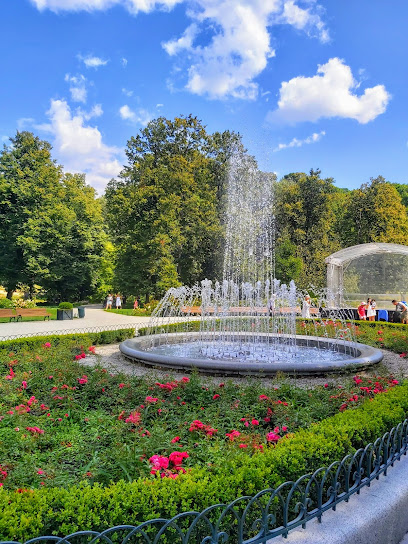
Vilnius Cathedral
Discover the architectural beauty and historical significance of Vilnius Cathedral, a cornerstone of Lithuania's cultural heritage and spiritual life.

Gate of Dawn
Experience the spiritual and historical significance of the Gate of Dawn in Vilnius, a captivating pilgrimage site with breathtaking architecture.
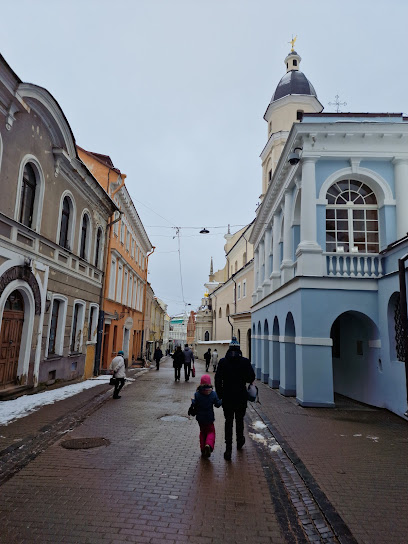
Etno Dvaras
Explore authentic Lithuanian cuisine at Etno Dvaras in Vilnius, where tradition meets taste in a cozy and inviting atmosphere.
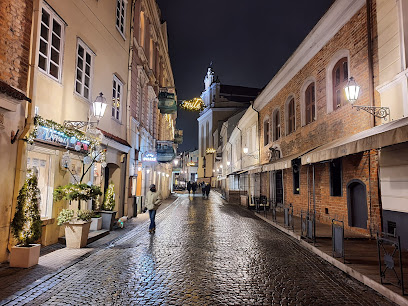
Gediminas Castle Tower
Explore Gediminas Castle Tower in Vilnius, a historic fortress offering breathtaking views and insights into Lithuania's rich heritage.
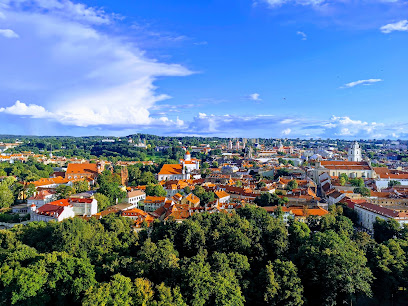
Vilnius TV Tower
Experience breathtaking views and rich history at the iconic Vilnius TV Tower, the tallest structure in the Baltic States.
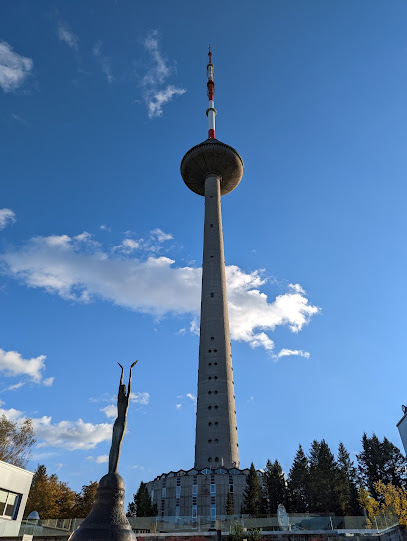
Lukiškės Square
Discover the charm of Lukiškės Square, a tranquil park in Vilnius, surrounded by historical architecture and vibrant cultural events.
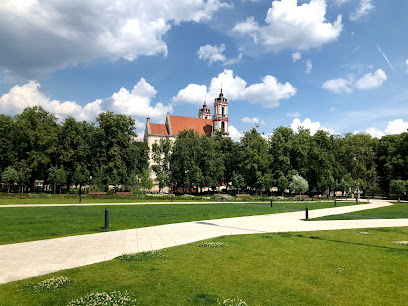
Palace of the Grand Dukes of Lithuania
Discover the rich history and stunning architecture of the Palace of the Grand Dukes of Lithuania, a must-visit landmark in Vilnius.
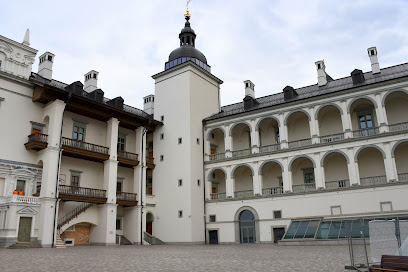
Vincas Kudirka Square
Discover the vibrant charm of Vincas Kudirka Square, a city park in Vilnius perfect for relaxation, culture, and local events.
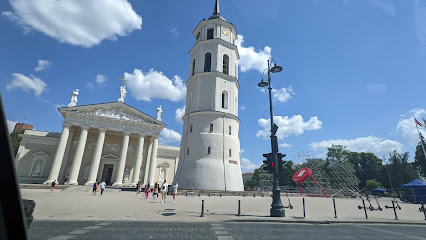
Lukiškių kalėjimas 2.0
Experience the rich history and vibrant culture of Lukiškės Prison 2.0, a unique landmark blending art, community, and heritage in Vilnius.
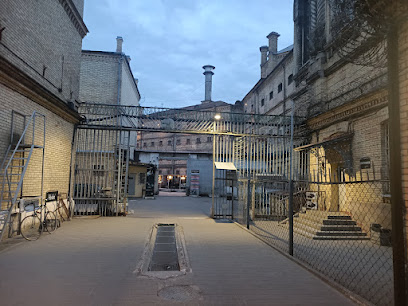
Three Crosses Monument
Discover the historical significance and stunning views at the Three Crosses Monument in Vilnius, a must-see landmark rich in culture and resilience.
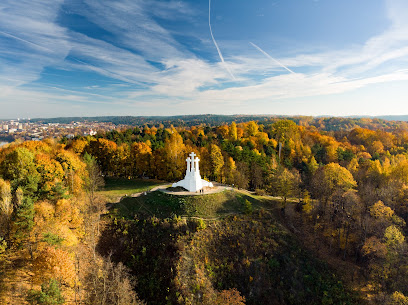
Museum of Occupations and Freedom Fights
Explore the poignant history of Lithuania at the Museum of Occupations and Freedom Fights, where stories of struggle and resilience come to life.
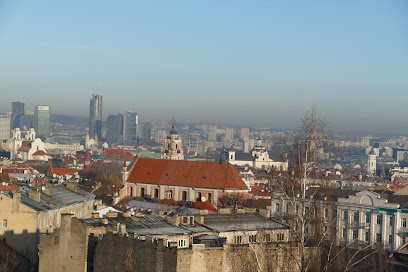
Cathedral Square
Discover the historical and architectural wonders of Cathedral Square, the vibrant heart of Vilnius, Lithuania.
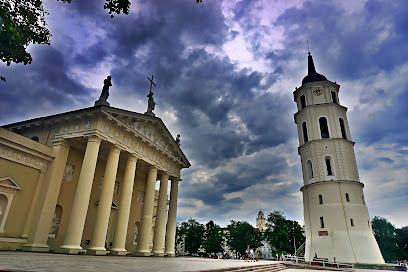
Vilnius Museum of Illusions
Discover the magic of perception at the Vilnius Museum of Illusions, a must-visit attraction blending art, science, and fun in Lithuania's capital.
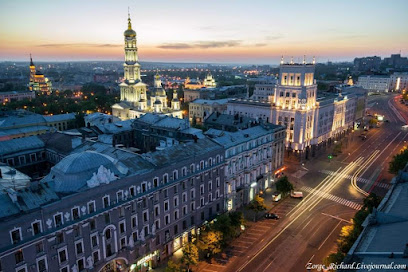
St. Anne's Church
Discover the intricate beauty and rich history of St. Anne's Church, an architectural gem in the heart of Vilnius, Lithuania.
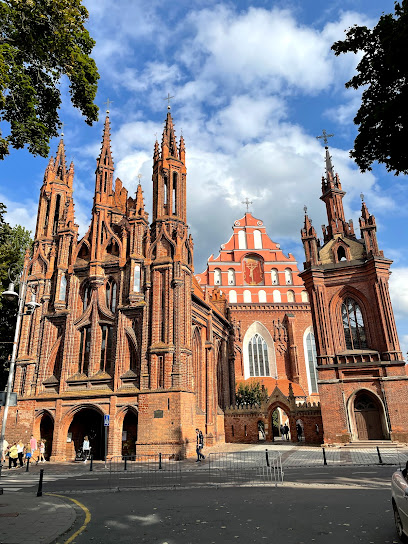
Unmissable attractions to see
Trakai Island Castle
Explore the captivating Trakai Island Castle, a stunning medieval fortress surrounded by picturesque lakes and rich Lithuanian heritage that enchants every visitor.
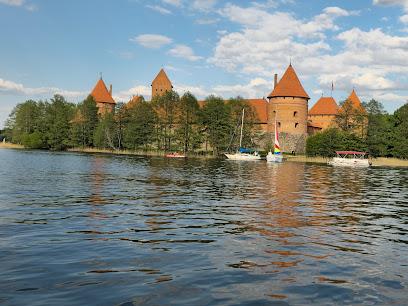
Vilnius Cathedral
Explore Vilnius Cathedral, an architectural masterpiece and vital cultural landmark showcasing Lithuania's rich history and Catholic heritage.
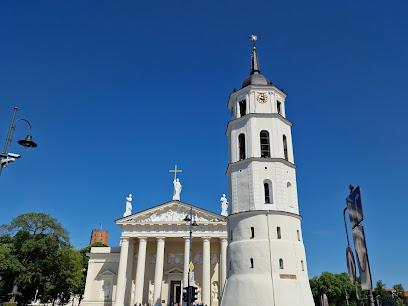
Vingis Park
Explore Vingis Park, Vilnius: A sprawling urban park offering scenic beauty, recreational activities, and cultural events in a serene environment.

Gate of Dawn
Discover the spiritual and historical significance of the Gate of Dawn, a must-visit pilgrimage site in the heart of Vilnius, Lithuania.
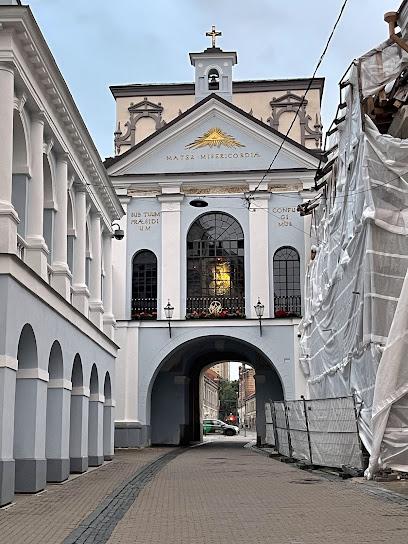
Gediminas Castle Tower
Discover the rich history and breathtaking views from Gediminas Castle Tower, a must-see landmark in Vilnius, Lithuania.

Pavilnys Regional Park
Explore the stunning landscapes and serene trails of Pavilnys Regional Park, a natural gem near Vilnius, perfect for hiking and outdoor adventures.
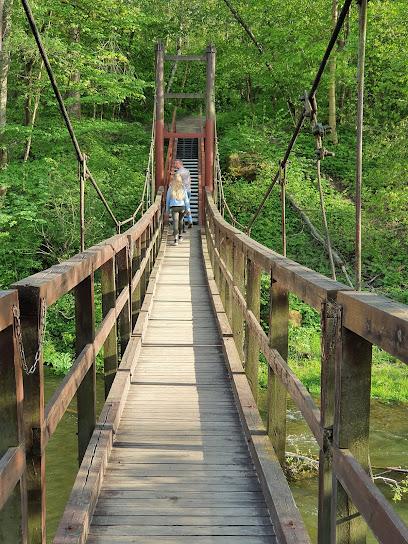
Vilnius TV Tower
Discover breathtaking views of Vilnius from the iconic TV Tower, the tallest structure in Lithuania and a symbol of the city's rich history.

Verkiai Regional Park
Discover the stunning landscapes and rich history of Verkiai Regional Park, a must-visit natural gem near Vilnius, Lithuania.
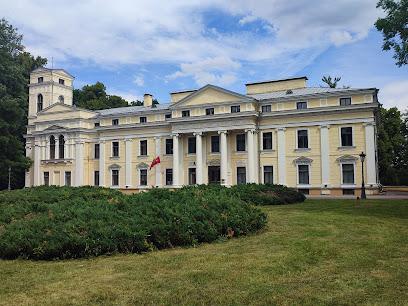
Hall Market
Explore the vibrant Hall Market in Vilnius for an authentic taste of local culture, cuisine, and crafts amidst historic charm.
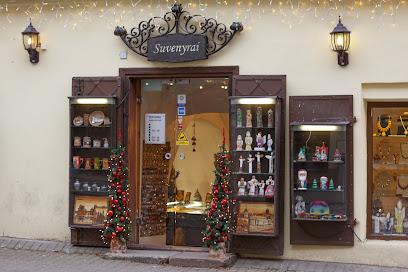
Palace of the Grand Dukes of Lithuania
Explore the rich history of Lithuania at the Palace of the Grand Dukes, a stunning museum in Vilnius showcasing royal heritage and culture.
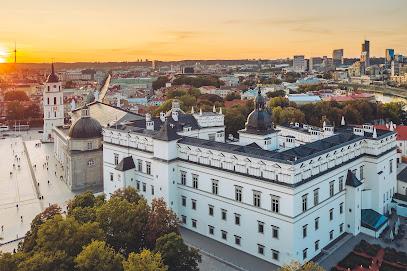
Vincas Kudirka Square
Explore the beauty and culture of Vincas Kudirka Square, a serene city park in Vilnius, where nature meets history and local traditions thrive.
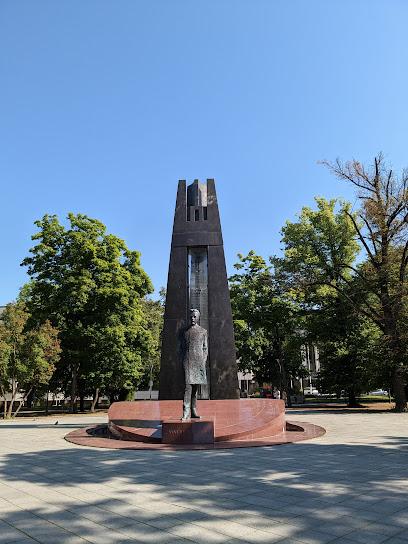
Kernavės archeologinė vietovė
Explore the ancient capital of Kernavė, a UNESCO World Heritage Site, rich in archaeological wonders and stunning natural beauty in Lithuania.
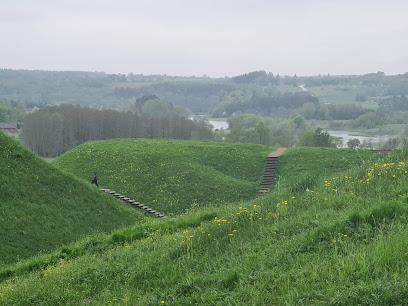
Church of Sts. Peter and Paul
Explore the serene beauty and rich history of the Church of Sts. Peter and Paul, a Baroque gem in Vilnius, Lithuania, perfect for cultural enthusiasts.
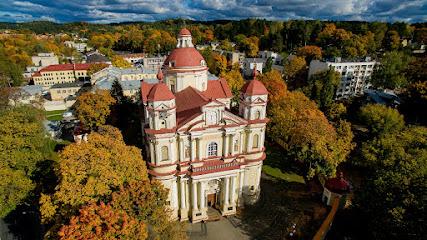
Museum of Occupations and Freedom Fights
Explore Lithuania's poignant history at the Museum of Occupations and Freedom Fights, where resilience and bravery are beautifully showcased.
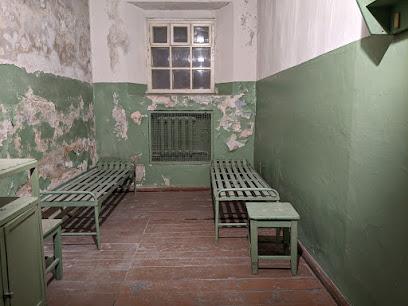
Cathedral Square
Explore the historic Cathedral Square in Vilnius, where stunning architecture and vibrant culture come together in the heart of Lithuania.
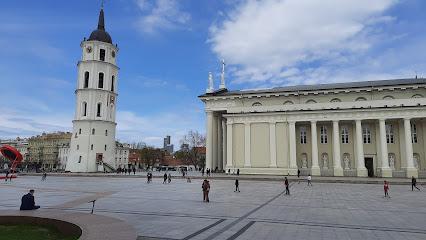
Essential places to dine
Etno Dvaras
Experience authentic Lithuanian cuisine at Etno Dvaras in Vilnius - where tradition meets flavor in every dish.
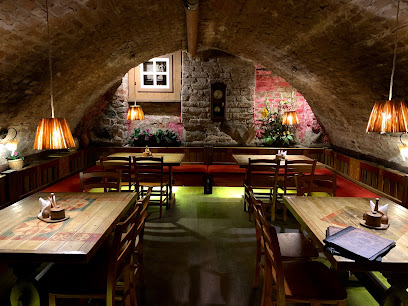
Grey
Discover the exquisite flavors of local and international cuisine at Grey Restaurant in Vilnius – where every meal is an unforgettable experience.
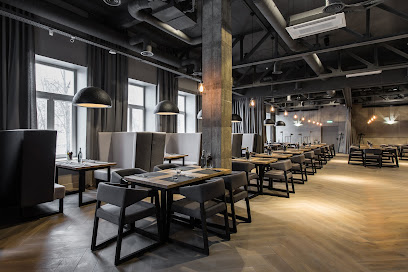
Senoji trobelė
Discover authentic Lithuanian flavors at Senoji Trobelė in Vilnius – where tradition meets culinary excellence.
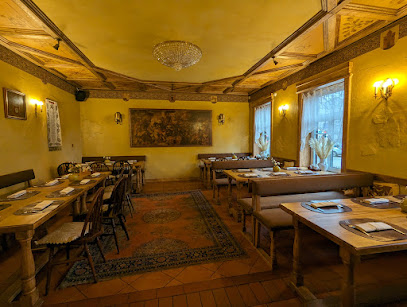
Žemaičių ąsotis
Discover the flavors of Lithuania at Žemaičių ąsotis – your gateway to traditional dishes in Vilnius.

Meat Lovers Vilnius
Savor the ultimate meat experience at Meat Lovers Vilnius - where flavor meets passion in every bite.
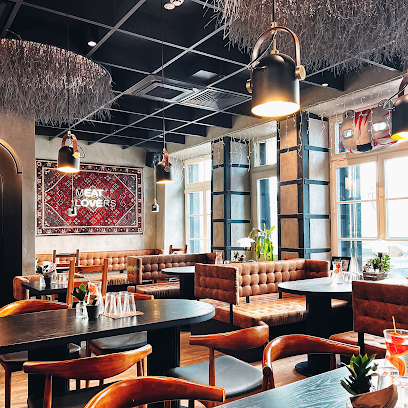
Bernelių Užeiga
Savor the rich flavors of Lithuania at Bernelių Užeiga - your gateway to traditional cuisine in Vilnius.
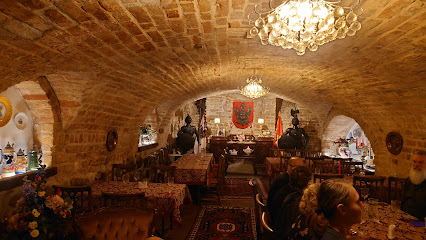
Lokys
Discover authentic Lithuanian cuisine at Lokys in Vilnius – where tradition meets modern culinary artistry.
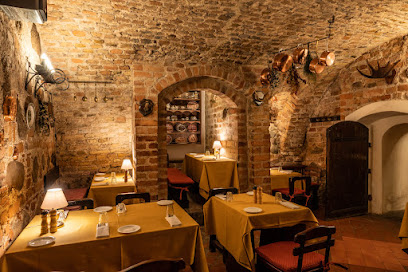
Pilies Katpėdėlė
Experience exquisite dining at Pilies Katpėdėlė in Vilnius – where local flavors meet culinary creativity in a cozy atmosphere.

Chačapuri @ Sodų gatvė
Discover the heart of Georgia in Vilnius at Chačapuri @ Sodų gatvė—where every dish tells a story.
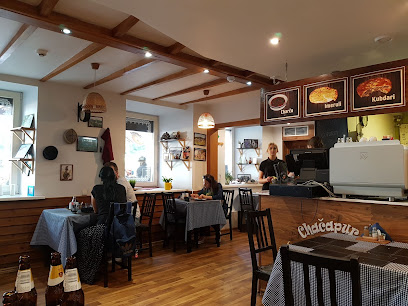
Selfish Bistro Vilnius
Discover the best seafood dining experience at Selfish Bistro in Vilnius, where fresh ingredients meet exceptional flavors in a cozy atmosphere.
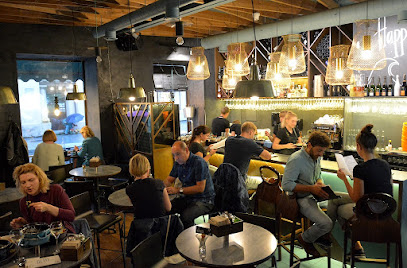
Old Green Grill House
Discover the vibrant flavors of modern European cuisine at Old Green Grill House in Vilnius - where culinary excellence meets a lively atmosphere.
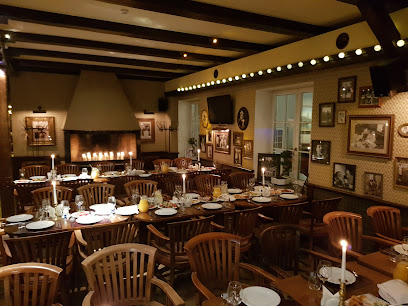
Blue Lotus Indian & Thai
Discover the vibrant fusion of Indian and Thai flavors at Blue Lotus in Vilnius - where every dish tells a story.
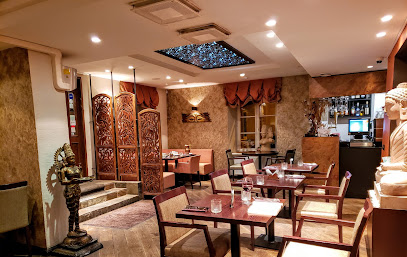
Galo do Porto
Discover authentic Portuguese flavors at Galo do Porto in Vilnius - where every meal is a culinary journey through Portugal's rich traditions.
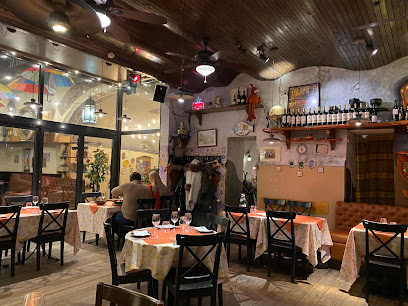
Cozy
Discover Cozy in Vilnius: A Culinary Haven Blending Local Flavors with Warm Hospitality.
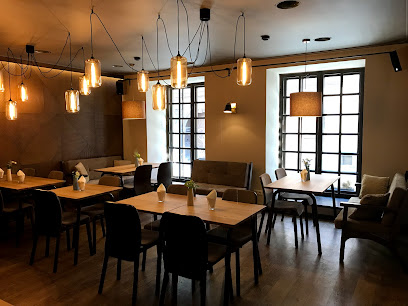
Trinity Restaurant and Cocktail House
Experience exquisite French cuisine and vibrant cocktails at Trinity Restaurant and Cocktail House in the heart of Vilnius.
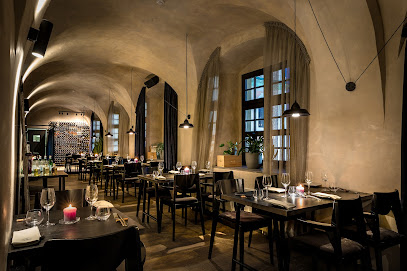
Markets, malls and hidden boutiques
AKROPOLIS Vilnius
Experience shopping, dining, and entertainment at AKROPOLIS Vilnius, the ultimate destination for tourists in Lithuania's capital.
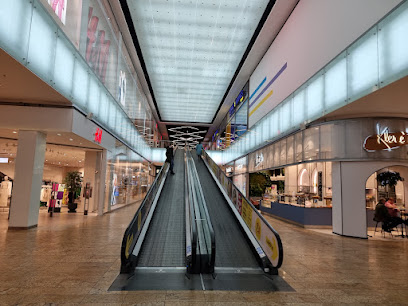
Ozas
Discover Ozas, Vilnius' premier shopping mall, where retail therapy meets culinary delights and vibrant entertainment options.
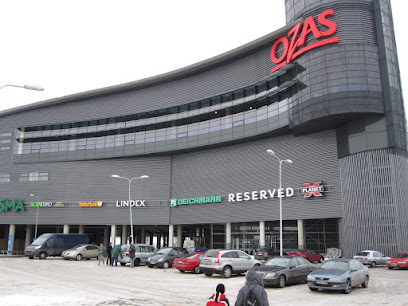
CUP
Discover the ultimate shopping experience at CUP in Vilnius, where retail, dining, and entertainment converge for an unforgettable adventure.
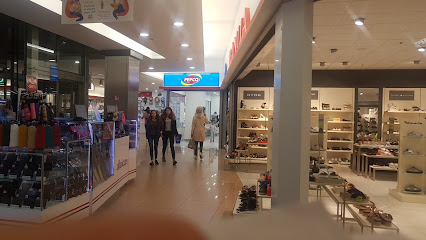
G9
Explore G9 Shopping Mall in Vilnius for a diverse shopping and dining experience in a vibrant atmosphere, perfect for every tourist's itinerary.
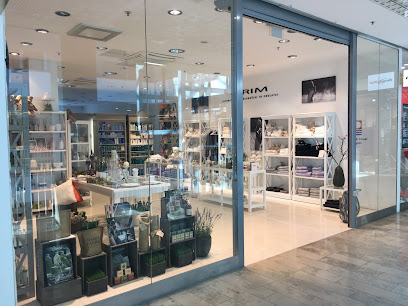
Flying Tiger Copenhagen
Explore the colorful and quirky world of Flying Tiger Copenhagen in Vilnius, a must-visit destination for unique gifts and creative finds.
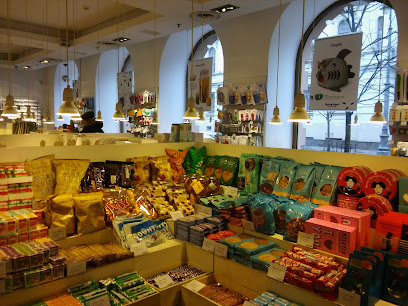
HUMANA VINTAGE (Tilto gatvė 10/8, Vilnius)
Explore HUMANA VINTAGE in Vilnius - a unique used clothing store filled with eclectic fashion treasures and sustainable style options.
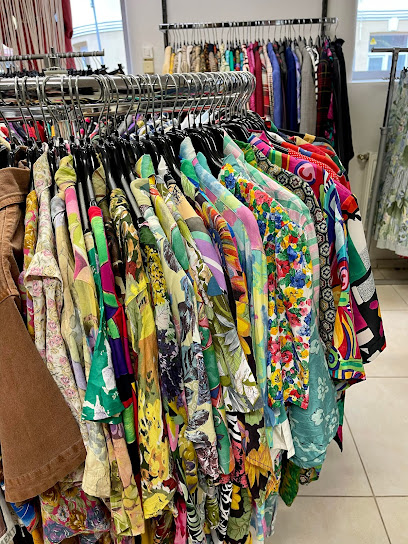
Ragainė - Baltik shop
Explore Ragainė - Baltik Shop in Vilnius for unique gifts, crafts, and authentic folk music that embody the spirit of Lithuania.
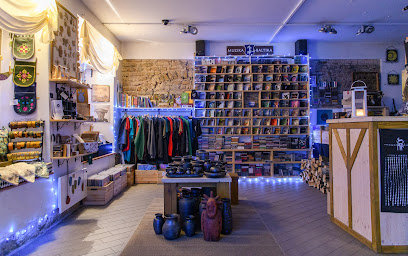
Frankenshop
Explore Frankenshop in Vilnius for unique fashion accessories and professional tattoo and piercing services, blending style and self-expression.
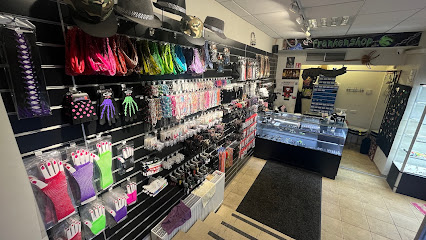
OUTLET BOUTIQUE
Explore OUTLET BOUTIQUE in Vilnius for stylish, high-quality footwear at fantastic prices, perfect for every occasion and taste.
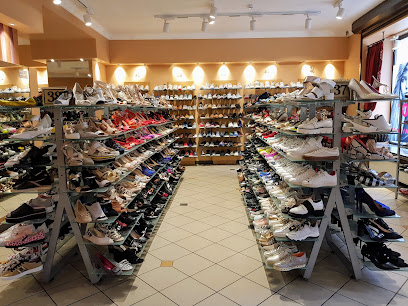
De'Žavu Vintage Boutique
Explore De'Žavu Vintage Boutique in Vilnius for unique vintage clothing and accessories that reflect timeless style and local charm.
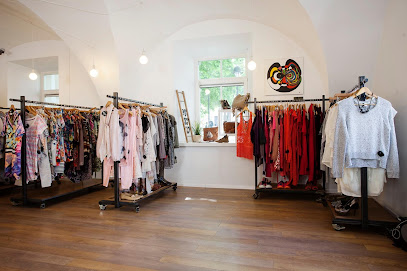
Fantasmagoria
Discover unique fashion at Fantasmagoria in Vilnius, where creativity meets quality apparel for the perfect shopping experience.

Outlet Boutique
Discover stylish footwear at Outlet Boutique in Vilnius—where fashion meets affordability and lasts a season longer.
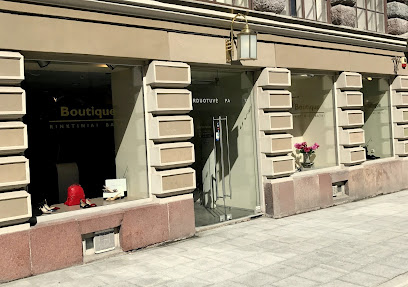
Local House Amatų namai
Explore the finest Lithuanian crafts and unique souvenirs at Local House Amatų namai, a charming gift shop in Vilnius.
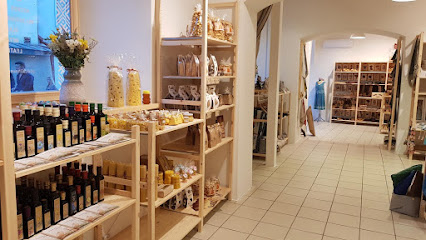
Drabužiai 50c Stikliai
Explore Drabužiai 50c Stikliai in Vilnius for unique vintage clothing and accessories, combining style with sustainability in a charming atmosphere.
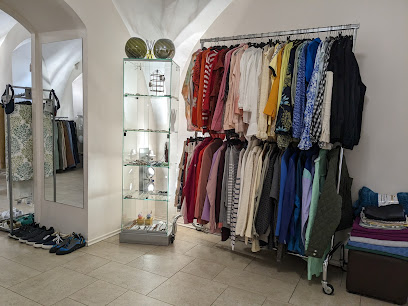
EtnoDesign lamps & gifts
Explore the artistic charm of EtnoDesign, a unique gift shop and lighting store in Vilnius, where tradition meets contemporary design.

Essential bars & hidden hideouts
Uncle Sam's American pub
Experience the vibrant taste of America at Uncle Sam's American Pub in Vilnius, offering delicious food and a lively atmosphere for every visitor.
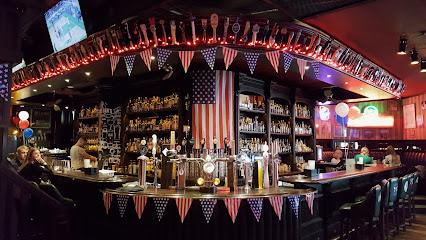
Piano Man Bar
Discover the vibrant nightlife of Vilnius at Piano Man Bar, where lively music and skilled bartenders come together for an unforgettable experience.
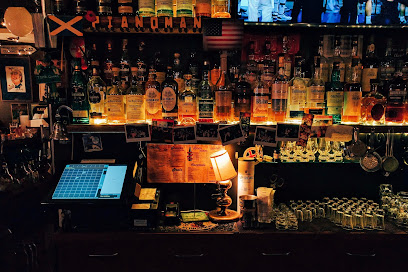
Vasaros terasa
Experience the vibrant nightlife of Vilnius at Vasaros Terasa, a rooftop bar offering stunning views, live music, and a lively atmosphere.
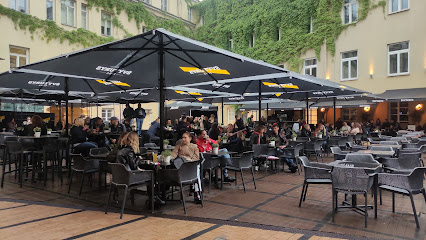
The pub Leičiai
Discover the heart of Lithuania at The Pub Leičiai, where traditional cuisine meets local brews in a vibrant setting.
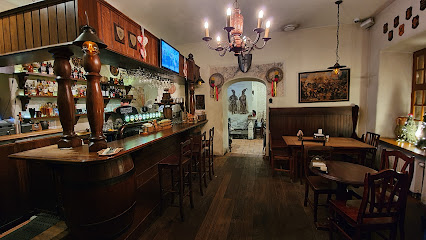
Local Pub
Discover Vilnius' Local Pub: a hub for unique beers, traditional dishes, and a friendly atmosphere in the heart of the city.
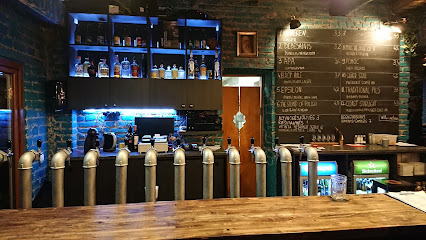
Distilerija
Discover the essence of Lithuanian spirit culture at Distilerija, a cozy bar in Vilnius offering artisanal drinks and local charm.
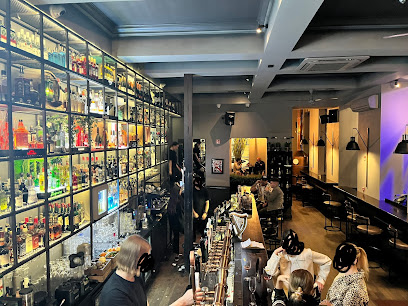
Gringo pub
Discover the lively spirit of Vilnius at Gringo Pub, where great drinks and camaraderie await in a vibrant setting.
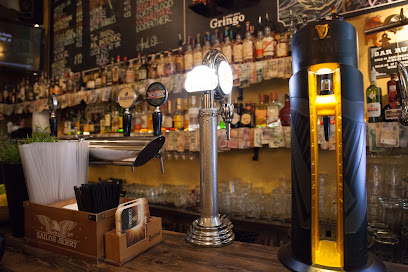
Trinity Restaurant and Cocktail House
Experience the exquisite fusion of French cuisine and vibrant nightlife at Trinity Restaurant and Cocktail House in Vilnius.
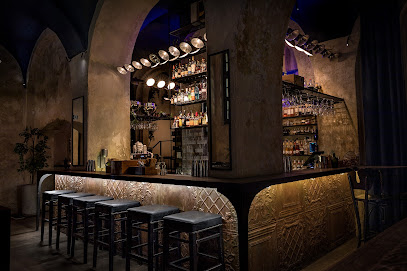
Bukowski Baras Vilnius
Discover the lively ambiance and rich drink selection at Bukowski Baras, a prime spot for experiencing Vilnius's nightlife.
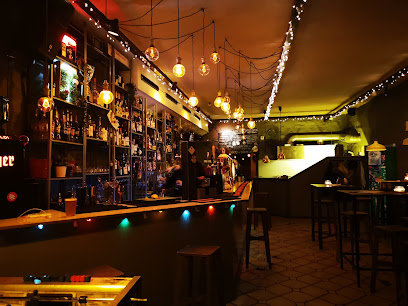
Skybar
Experience breathtaking views and exquisite cocktails at Vilnius' premier rooftop bar, the Skybar.
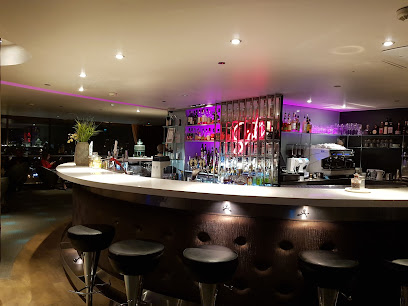
Alchemikas
Discover Alchemikas, a cocktail bar in Vilnius where innovative drinks meet cozy ambiance, perfect for unwinding after a day of exploration.
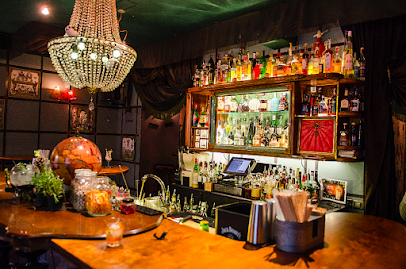
Who Hit John
Discover the lively spirit of Vilnius at Who Hit John, where exceptional drinks meet a vibrant atmosphere for an unforgettable nightlife experience.
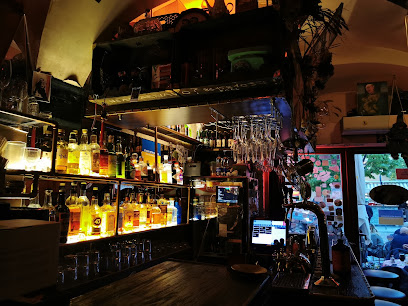
Viskio Baras “King & Mouse - Whisky Bar & Shop”
Discover over 1,000 whisky varieties at Viskio Baras “King & Mouse - Whisky Bar & Shop” in Vilnius, a haven for whisky enthusiasts.
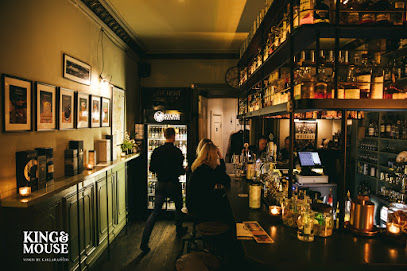
Apoteka Bar
Explore the exquisite world of cocktails at Apoteka Bar, Vilnius's top destination for mixology and vibrant nightlife.
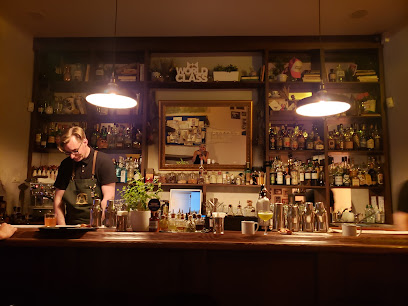
The Whisky Shop & Bar by Duoklė Angelams
Discover the vibrant whisky culture of Vilnius at The Whisky Shop & Bar by Duoklė Angelams, where every sip tells a story.
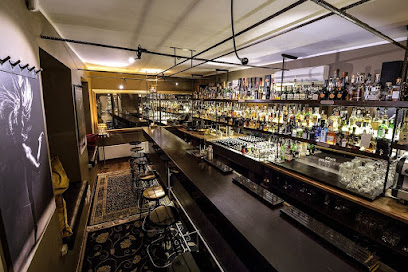
Local Phrases
-
- HelloLabas
[lah-bahs] - GoodbyeViso gero
[vee-so geh-ro] - YesTaip
[taip] - NoNe
[neh] - Please/You're welcomePrašau
[prah-shau] - Thank youAčiū
[ah-choo] - Excuse me/SorryAtsiprašau
[aht-see-prah-shau] - How are you?Kaip tu?
[kai-p too] - Fine. And you?Gerai. O tu?
[geh-ry. oh too] - Do you speak English?Ar kalbate angliškai?
[ahr kahl-bah-te ahng-leesh-kai] - I don't understandAš nesuprantu
[ahsh neh-soo-prahn-too]
- HelloLabas
-
- I'd like to see the menu, pleaseNorėčiau pamatyti meniu, prašau
[noh-reh-chow pah-mah-tee-tee meh-nyoo, prah-shau] - I don't eat meatAš nevalgau mėsos
[ahsh neh-val-gow meh-sohs] - Cheers!Į sveikatą!
[ee svee-kah-tah] - I would like to pay, pleaseNorėčiau sumokėti, prašau
[noh-reh-chow soo-moh-keh-tee, prah-shau]
- I'd like to see the menu, pleaseNorėčiau pamatyti meniu, prašau
-
- Help!Pagalba!
[pah-gahl-bah] - Go away!Išeik!
[ee-sheh-eek] - Call the Police!Paskambinkite policijai!
[pah-skahm-been-kee-te poh-lee-tsee-yai] - Call a doctor!Paskambinkite gydytojui!
[pah-skahm-been-kee-te geh-dee-toh-yoo-ee] - I'm lostAš pasiklydau
[ahsh pah-see-kloo-dow] - I'm illAš sergu
[ahsh sehr-goo]
- Help!Pagalba!
-
- I'd like to buy...Norėčiau pirkti...
[noh-reh-chow peerk-tee] - I'm just lookingAš tik žiūriu
[ahsh teek zyoo-ree-oo] - How much is it?Kiek tai kainuoja?
[kyek tai kai-noo-yah] - That's too expensiveTai per brangu
[tai pehr brahn-goo] - Can you lower the price?Ar galite sumažinti kainą?
[ahr gah-lee-te soo-mah-zin-tee kai-nah]
- I'd like to buy...Norėčiau pirkti...
-
- What time is it?Kiek valandų?
[kyek vah-lahn-doo] - It's one o'clockViena valanda
[vyeh-nah vah-lahn-dah] - Half past (10)Dešimt ir pusė
[deh-sheemt eer pooh-seh] - MorningRytas
[ree-tahs] - AfternoonPopietė
[poh-pyeh-teh] - EveningVakaras
[vah-kah-rahs] - YesterdayVakar
[vah-kahr] - TodayŠiandien
[shyah-n-dyehn] - TomorrowRytoj
[ree-toy] - 1Vienas
[vyeh-nahs] - 2Du
[doo] - 3Trys
[treese] - 4Keturi
[keh-too-ree] - 5Penki
[pen-kee] - 6Šeši
[sheh-shee] - 7Septyni
[sehp-tee-nee] - 8Aštuoni
[ah-shtwoh-nee] - 9Devyni
[deh-vee-nee] - 10Dešimt
[deh-sheemt]
- What time is it?Kiek valandų?
-
- Where's a/the...?Kur yra...
[koor yrah] - What's the address?Koks adresas?
[kohks ah-dreh-sahs] - Can you show me (on the map)?Ar galite man parodyti (žemėlapyje)?
[ahr gah-lee-te mahn pah-roh-dit-te zheh-meh-lah-pyeh] - When's the next (bus)?Kada kitas...
[kah-dah kee-tahs] - A ticket (to ....)Bilietas (į ....)
[bee-lyeh-tahs ee]
- Where's a/the...?Kur yra...
History of Vilnius
-
Vilnius was founded in the early 14th century by Grand Duke Gediminas. According to legend, Gediminas had a dream of an iron wolf standing on a hill, which was interpreted by a pagan priest as a sign to build a city that would become a great capital. This vision led to the founding of Vilnius in 1323, and it quickly grew as a political and cultural center of the Grand Duchy of Lithuania.
-
During the 14th and 15th centuries, Vilnius thrived as the capital of the Grand Duchy of Lithuania. It became a melting pot of different cultures, including Polish, Jewish, Russian, and German communities. This period saw the construction of many significant buildings, such as the Vilnius Cathedral and the Vilnius Castle Complex, which became symbols of the city's burgeoning architectural heritage.
-
In 1569, the Union of Lublin resulted in the creation of the Polish-Lithuanian Commonwealth, a political union between Poland and Lithuania. Vilnius remained a crucial city within this new entity, serving as a vital cultural and educational hub. The establishment of Vilnius University in 1579 by King Stephen Báthory further cemented the city's importance, attracting scholars and students from across Europe.
-
The late 18th century was a tumultuous period for Vilnius, as the city experienced the effects of the Partitions of Poland. Between 1772 and 1795, the Polish-Lithuanian Commonwealth was divided among the Russian Empire, the Kingdom of Prussia, and the Habsburg Monarchy. Vilnius was annexed by the Russian Empire in 1795, marking the beginning of a new era in its history.
-
Throughout the 19th century, Vilnius was a center of political and cultural resistance against Russian rule. The November Uprising of 1830-1831 saw Polish and Lithuanian forces attempting to overthrow Russian domination. Although the uprising was ultimately unsuccessful, it demonstrated the resilience and determination of the city's inhabitants. During this time, Vilnius also became a hub for the Lithuanian National Revival, a movement aimed at preserving and promoting Lithuanian identity and culture.
-
Vilnius faced significant hardships during World War II. The city was initially occupied by the Soviet Union in 1939, then by Nazi Germany in 1941. The Jewish community in Vilnius, once a vibrant and integral part of the city's fabric, was decimated during the Holocaust. Over 90% of Vilnius' Jewish population was killed, and the city’s Jewish Quarter was largely destroyed. This period left a lasting scar on the city and its people.
-
After World War II, Vilnius was incorporated into the Soviet Union as part of the Lithuanian SSR. The Soviet era brought significant changes to the city, including industrialization and the construction of new residential areas. However, this period was also marked by repression and efforts to suppress Lithuanian culture and national identity. Despite these challenges, Vilnius remained a focal point for Lithuanian intellectual and cultural life.
-
Lithuania declared its independence from the Soviet Union on March 11, 1990, and Vilnius was at the heart of this movement. The city's residents played a crucial role in the events leading up to the fall of the Soviet Union, including the peaceful protests and the January Events of 1991, where Soviet forces attempted to suppress the independence movement. Vilnius emerged as the capital of a newly independent Lithuania, embarking on a path of democratic and economic development.
-
Since Lithuania joined the European Union in 2004, Vilnius has experienced significant growth and modernization. The city has become a vibrant and cosmopolitan hub, attracting tourists, businesses, and cultural events from around the world. In 2009, Vilnius was named a European Capital of Culture, highlighting its rich historical and cultural heritage. Today, Vilnius continues to evolve, blending its historical charm with modern dynamism.
Vilnius Essentials
-
Vilnius, the capital of Lithuania, is well connected internationally. The main gateway is Vilnius International Airport (VNO), located about 6 km south of the city center. Direct flights are available from major European cities. Alternatively, you can reach Vilnius by train from neighboring countries like Poland, Latvia, and Belarus. Bus services operated by companies such as Eurolines and Lux Express also connect Vilnius to various European cities.
-
Vilnius has an efficient public transportation system comprising buses and trolleybuses. Tickets can be purchased at kiosks, online, or directly from the driver. The city also offers a bike-sharing service and numerous taxi options, including ride-hailing apps like Bolt. For those preferring self-driving, car rental services are available at the airport and in the city center.
-
The official currency in Lithuania is the Euro (EUR). Credit and debit cards are widely accepted in most establishments, including restaurants, shops, and hotels. ATMs are plentiful throughout the city. However, it is advisable to carry some cash for smaller vendors or markets that may not accept cards.
-
Vilnius is generally a safe city for tourists. However, standard precautions should be taken, such as avoiding poorly lit areas at night and being cautious with personal belongings in crowded places. Areas like the bus station or some parts of the Old Town can be hotspots for pickpocketing, so stay vigilant.
-
In case of emergency, dial 112 for immediate assistance. Vilnius has several hospitals and medical facilities that can provide urgent care. It is advisable to have travel insurance that covers medical emergencies. Pharmacies are widely available for minor health issues and over-the-counter medications.
-
Fashion: Do dress comfortably and season-appropriate, but avoid overly casual attire when dining out at upscale restaurants or visiting religious sites. Religion: Do respect local customs and traditions; always cover your head when entering churches. Public Transport: Do validate your ticket upon boarding. Don’t eat or drink on public transport. Greetings: Do greet people with a firm handshake. Eating & Drinking: Do try local dishes like cepelinai and šaltibarščiai. Don’t refuse food or drink offerings as it can be considered impolite.
-
To experience Vilnius like a local, stroll through the Užupis district, a bohemian neighborhood with its own 'constitution.' Visit local markets such as Hales Market for fresh produce and Lithuanian delicacies. Engage with locals; they are often friendly and willing to share insights about the city. Don't miss the opportunity to attend local events and festivals, which provide a deep dive into Lithuanian culture.
Trending Landmark in Vilnius
-
Bernardine Garden
-
Vilnius Cathedral
-
Gate of Dawn
-
Etno Dvaras
-
Gediminas Castle Tower
-
Vilnius TV Tower
-
Lukiškės Square
-
Palace of the Grand Dukes of Lithuania
-
Vincas Kudirka Square
-
Lukiškių kalėjimas 2.0
-
Three Crosses Monument
-
Museum of Occupations and Freedom Fights
-
Cathedral Square
-
Vilnius Museum of Illusions
-
St. Anne's Church
Nearby Cities to Vilnius
-
Things To Do in Jonava
-
Things To Do in Kaunas
-
Things To Do in Utena
-
Things To Do in Marijampolė
-
Things To Do in Panevėžys
-
Things To Do in Daugavpils
-
Things To Do in Suwalki
-
Things To Do in Šiauliai
-
Things To Do in Bialystok
-
Things To Do in Riga
-
Things To Do in Jurmala
-
Things To Do in Sigulda
-
Things To Do in Klaipėda
-
Things To Do in Cesis
-
Things To Do in Kuldiga

















